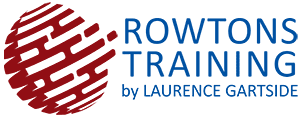Forecasting is an essential part of any business that is famously difficult to get even close to right.
It is difficult and there is no magic bullet. But there are good and bad ways to approach it that have a dramatic impact on a forecast’s accuracy and value.
In this article, we’ll look at three simple ideas that you can apply to your business today to improve the accuracy of your forecasts. But first, let’s start by very briefly explaining what forecasting is and why it matters.
What is forecasting?
Forecasting is the process trying to predict future demand for your goods and services that your organization provides. This involves gathering data from a range of current and historical sources such as historic sales, expert opinion, reading leading indicators of future market trends and many others. These predictions can be short-term, such as next week’s or next month’s demand, or they can be longer-term, such as the next five years’ demand.
Why is forecasting important?
Forecasting is incredibly important. It is required throughout the organization from purchasing, operations, finance, marketing and sales, customer support and more. For example, with purchasing, they need it to plan how much inventory to buy ahead of time whilst operations need to plan their capacity and staffing. Longer term forecasts are required for longer term decisions such as acquiring appropriate premises and machinery.
Many of the decisions to run a successful business today have to me made well in advance. When buying raw materials, there is often a long lead time from placing an order to being able to receive it, especially if we are procuring it from far away. Furthermore, getting the forecasts badly wrong can come with serious business consequences:
- Estimate too little demand and you won’t have enough inventory and capacity, missing out on potential sales and customers.
- Estimate too much demand and you’ll probably buy excessive inventory and capacity and you’ll be left with cumbersome and expensive inventory and unusable capacity.
Forecasts may always end up being wrong but that doesn’t stop them from being incredibly useful and organizations should give serious attention to undertake rigorous and regular forecasting.
DISCOVER THE “FORGOTTEN FUNDAMENTALS” OF OPERATIONS MANAGEMENT”
How to improve your business forecasts?
Let’s look at 3 underappreciated methods to improve your forecasts.
- Involve your suppliers and ask them for their input
When building a forecast, we usually think of involving our customers or getting as far down the supply chain (towards the end customer) as we can get. That is obviously a great place to start, however, what is often overlooked is that our own suppliers have valuable information concerning the demand for our own products and services. Aside from our own organization, our suppliers are likely supplying other similar companies as well, and the conversations they are having with these customers—who are also trying to build their own forecasts and are gathering information—could give us some very invaluable insights to the nature of the market / industry as a whole.
- Keep better historical data
To build our forecasts, we rely heavily on past information, we typically use historical demand data as a core starting point to estimate future demand. However, we can keep much better historical data allowing us to make better use of it. To improve its value and insights, we should seek to record some of the extra available “metadata” around the historical demand figures. For example, imagine having an ice cream van, and you’re trying to decide how much ice cream to buy. To inform that decision you should have been keeping records of your previous sales but also the weather on each of those days, the number of other ice cream vans that were in your sale locations, the possible special events that happened etc. All this metadata combined with your historical data will allow you to build much better forecasts by understanding more from your historical data than just a record of how many ice creams were sold.
- Gather independent opinions
Opinions and insights from experts or well-placed professionals, both internal or external to your organization, are a foundational way to contribute to our forecasts. One thing to be wary of when asking for opinion from multiple people is consensus groupthink. Before organizing a big meeting to discuss a topic such as making forecasts, it would be ideal to first gather each member’s opinions separately. This gives you the great benefit of allowing people to think first on their own and get value from each person. The danger of only getting input in a group setting is the group conforming, adapting or censoring their public opinion to confirm with the dominant group direction or those of the noisier, more popular, or more senior individuals. Gather independent opinions first to get the full value of their diversity of knowledge and thought and then consider bringing people together to understand the background reasoning to significant differences.
Summary: Improve the accuracy of your demand forecasting?
So, three ideas to improve your business forecasts of future demand. Ask for your supplier’s input and to collaborate with them, keeping better historical data as well as the relevant, associated metadata, and seeking independent opinions to mitigate against groupthink.
Crack On!

